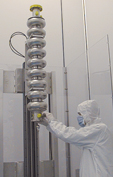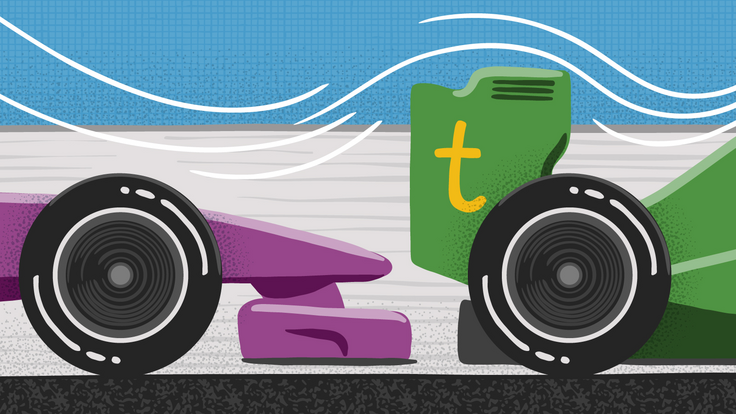 |
|
Photo: Hasan Padamsee, Cornell University |
A top gradient for cleanliness
After undergoing a buffered chemical polishing (BCP) treatment at Cornell University, the first US-processed and tested International Linear Collider superconducting cavity achieved a milestone accelerating gradient of 26 MV/m (megavolts per meter)–surpassing the first gradient goal (25 MV/m). The joint effort of the SMTF (Superconducting Module Test Facility) collaboration was a first test for the US facilities for ILC.
"This is a good [first] achievement, " says Hasan Padamsee of Cornell University. "ILC cavities have not been tested in the US yet, and none of our facilities have been checked out to that extent. We decided to do a standard treatment that has been done for some years now, and we got the best result that you can hope to get at this stage."
Etching essentially cleans the cavity, with the BCP treatment removing a damaged layer typically 100 micrometers thick. Then, a high-pressure water rinsing scrubs the surface clean. Says Padamsee: "We showed no field emission, which means that our process is very clean."
Purchased from ACCEL Instruments in Germany, the cavity underwent mechanical measuring and testing at Fermilab before being sent to the SMTF collaboration partners Cornell and Jefferson Lab. The cavity will next be sent to JLab for electropolishing, and scientists eventually expect a gradient of 35 MV/m.
Elizabeth Clements
Click here to download the pdf version of this article.






